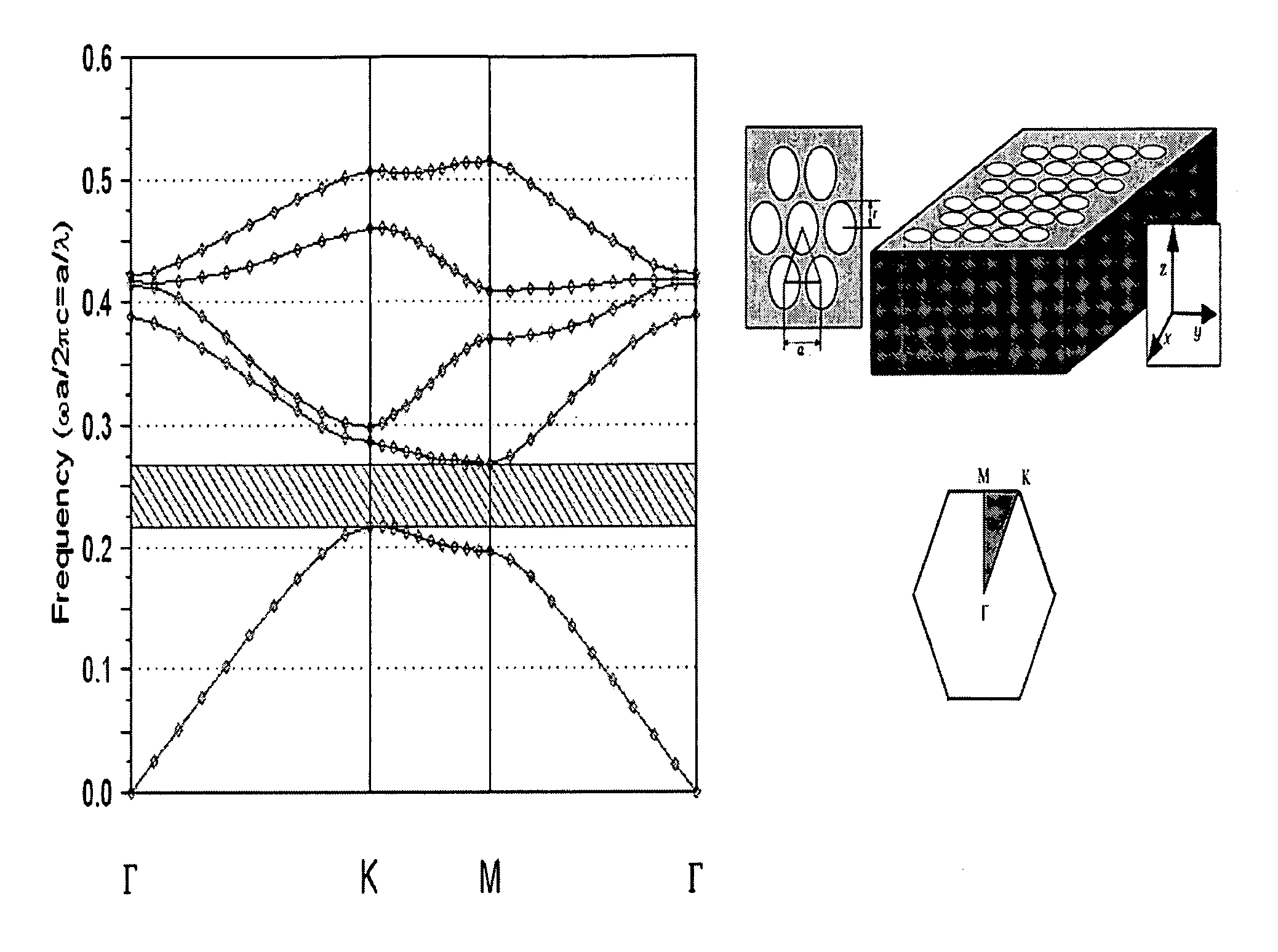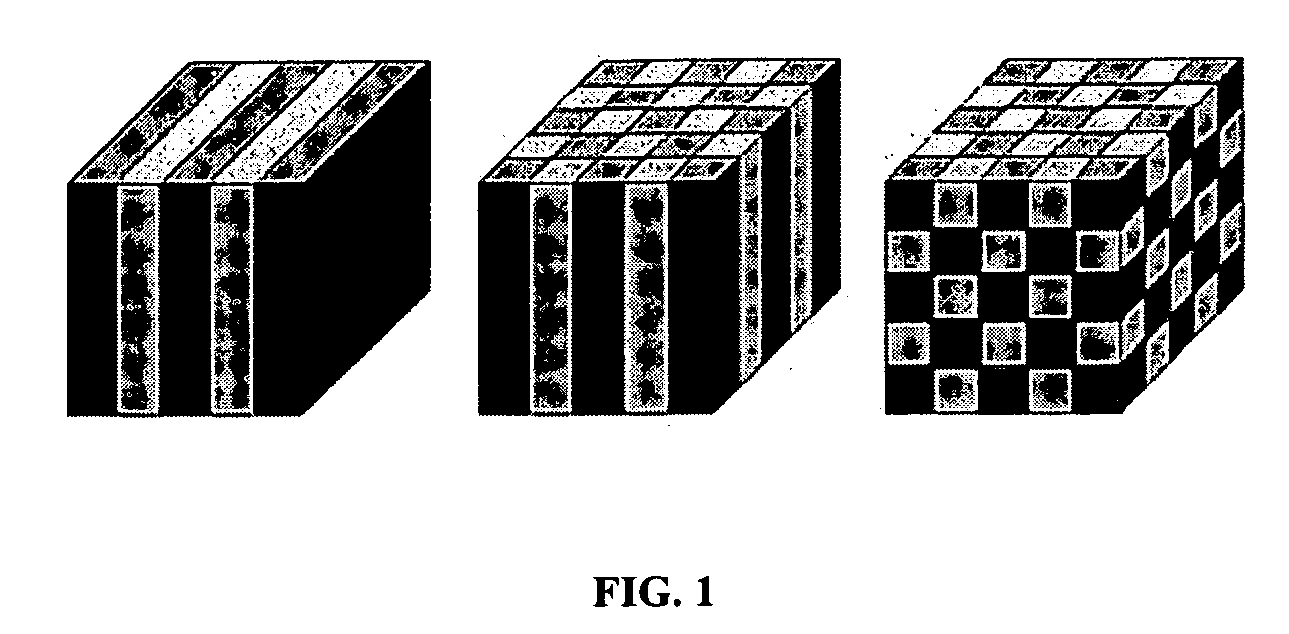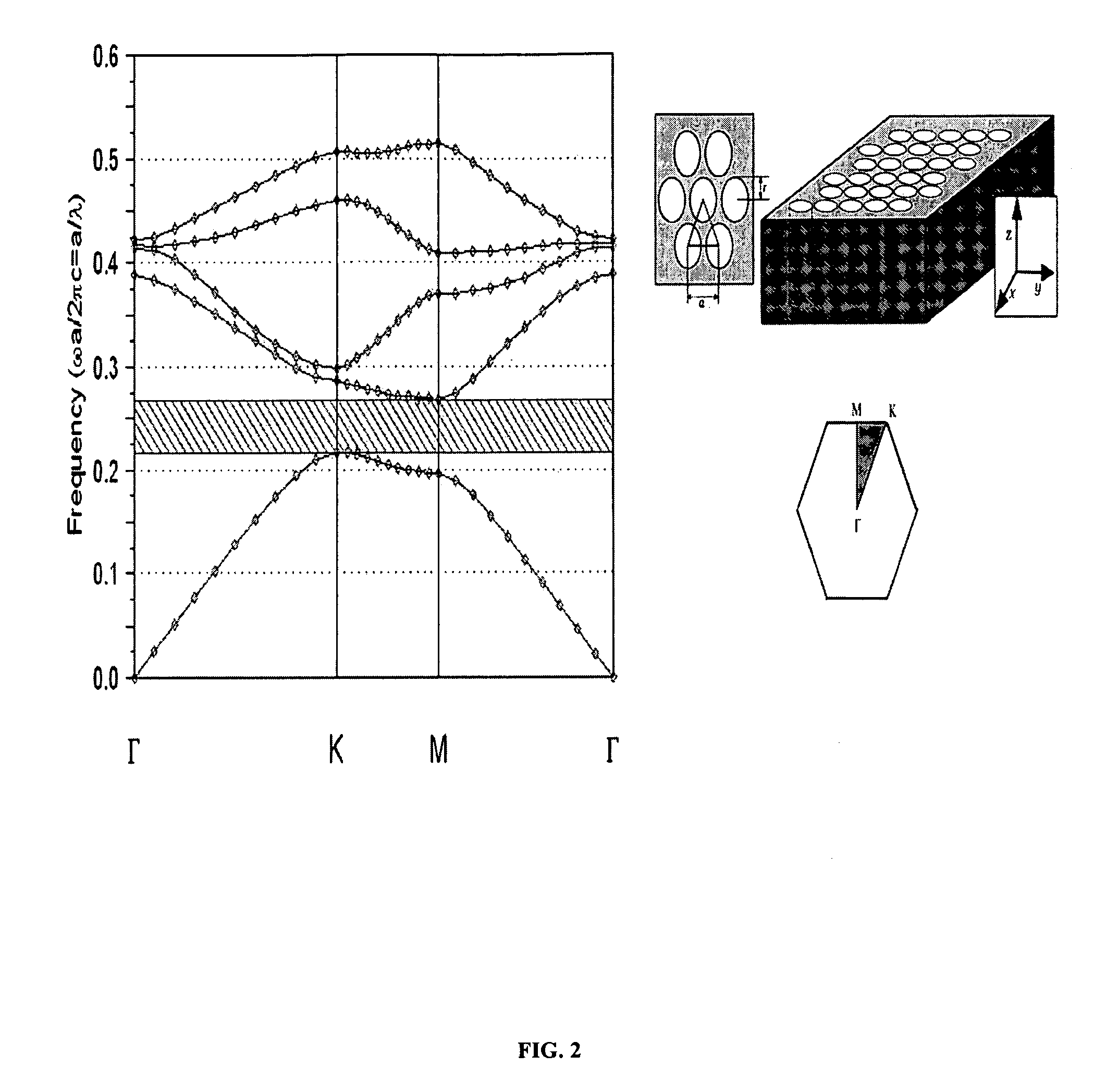Spontaneous emission of telecommunication wavelength emitters coupled to at least one resonant cavity
a technology of telecommunication wavelength and emitter, which is applied in the direction of lasers, semiconductor devices, semiconductor lasers, etc., can solve the problems of not providing suitable solutions to overcome such hurdles and many different hurdles to be utilized by such devices
- Summary
- Abstract
- Description
- Claims
- Application Information
AI Technical Summary
Benefits of technology
Problems solved by technology
Method used
Image
Examples
example
[0104]L3 nanocavities in silicon, where three air cylinders are replaced with a center cylinder (see FIG. 16), are used for studying both mid-cavity-plane and evanescent coupling of PbS quantum dots (QD). The design parameters are as follows: a=420 nm, r=0.29a (±10%), rc=0.28a (±10%), and t=0.6a, where a, r, rc, and t represent the lattice parameter, radius of holes, radius of the center hole, and slab thickness, respectively (rc=0.26a (±10%) was also used). All cavities are s1 or s3 detuned (see Akahane et al. Opt. Express, 13, p. 1202 (2005), which is incorporated by reference herein in its entirety). S1 detuning refers to lateral displacement of the air cylinders (2 total) that are near the resonant cavity and s3 detuning refers to later displacement of the 3 air cylinders (6 total) near the resonant cavity.
[0105]The silicon photonic crystal devices are fabricated on a SiO2 cladding and incorporate one or more waveguides (see FIG. 16) that allow for lensed optical fiber-waveguide...
PUM
 Login to View More
Login to View More Abstract
Description
Claims
Application Information
 Login to View More
Login to View More - R&D
- Intellectual Property
- Life Sciences
- Materials
- Tech Scout
- Unparalleled Data Quality
- Higher Quality Content
- 60% Fewer Hallucinations
Browse by: Latest US Patents, China's latest patents, Technical Efficacy Thesaurus, Application Domain, Technology Topic, Popular Technical Reports.
© 2025 PatSnap. All rights reserved.Legal|Privacy policy|Modern Slavery Act Transparency Statement|Sitemap|About US| Contact US: help@patsnap.com



